Abstract
Ninety-nine patients had their function recorded regularly over the first 13 weeks after their stroke. Five functional areas were studied: urinary continence, mobility, the ability to dress, feeding, and the ability to transfer from bed to chair. Thirty-two patients died before 13 weeks. Forty-five of the 67 survivors had assessments twice weekly from within 4 days of their stroke. Recovery in these 45 patients occurred fastest in the first 2 weeks, by which time at least 50% of recovery had occurred, but it was still continuing at 13 weeks. Urinary incontinence present between 7 and 10 days after stroke was the most important adverse prognostic factor both for survival and for recovery of function. Age was the second most important factor. Hospital discharge seemed to occur once recovery had stopped, although four of the 49 patients discharged had been fully independent for at least 12 days prior to discharge. It is suggested that rehabilitative therapy should concentrate less on physical function and more on cognitive ability.
Full text
PDF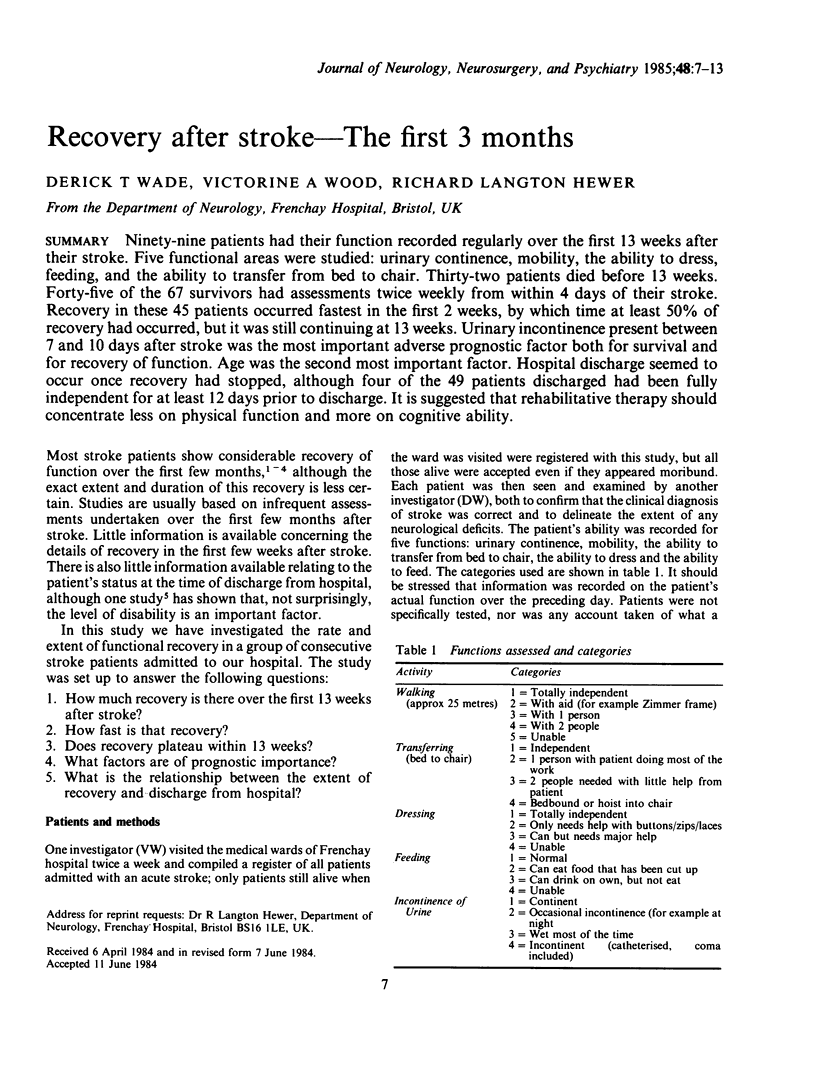
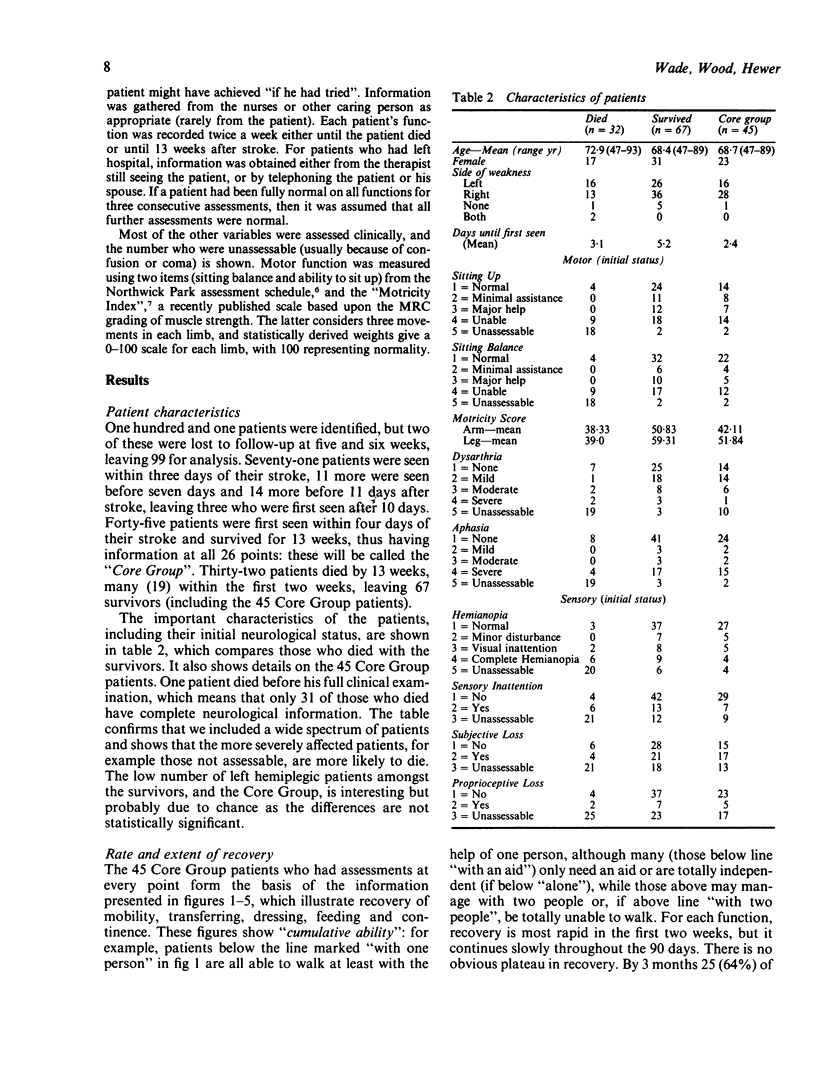
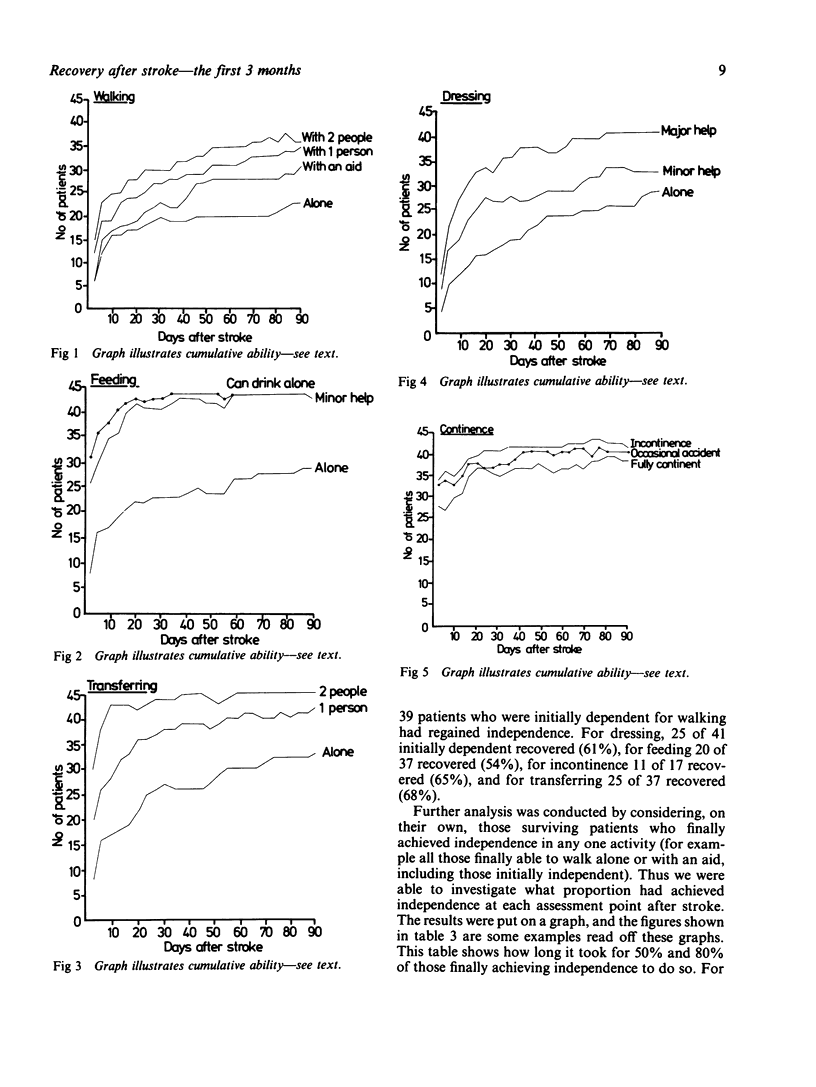
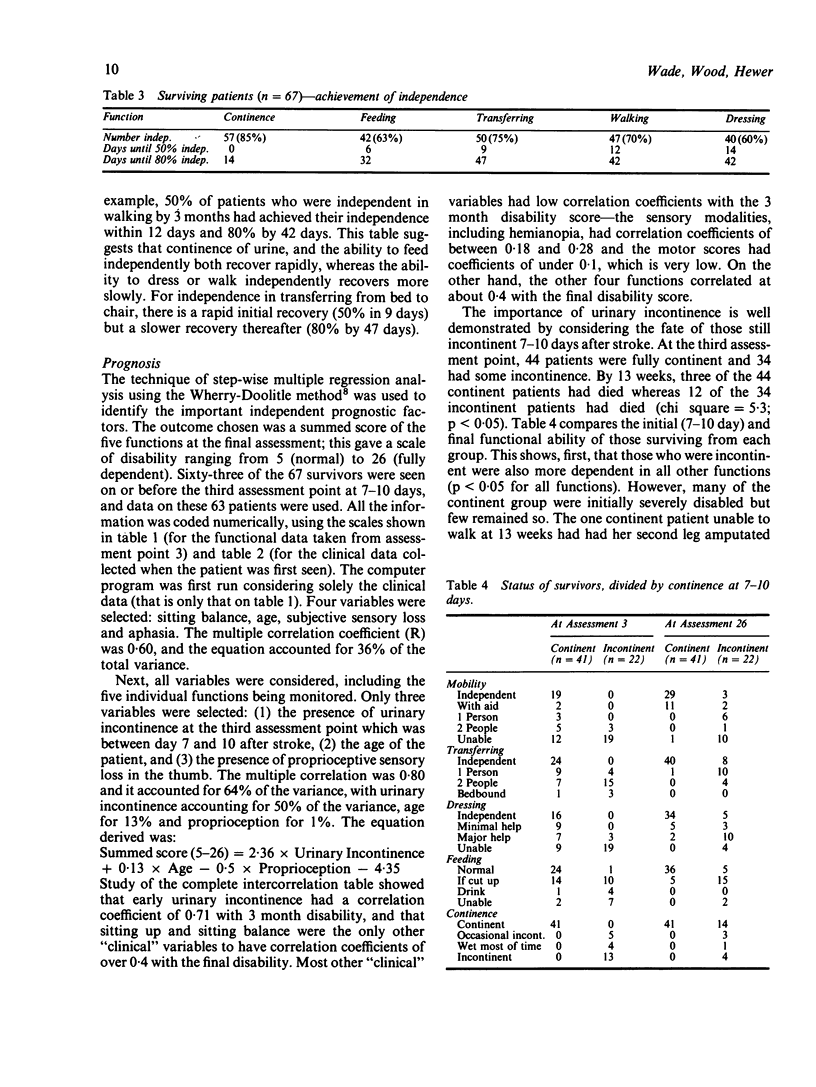
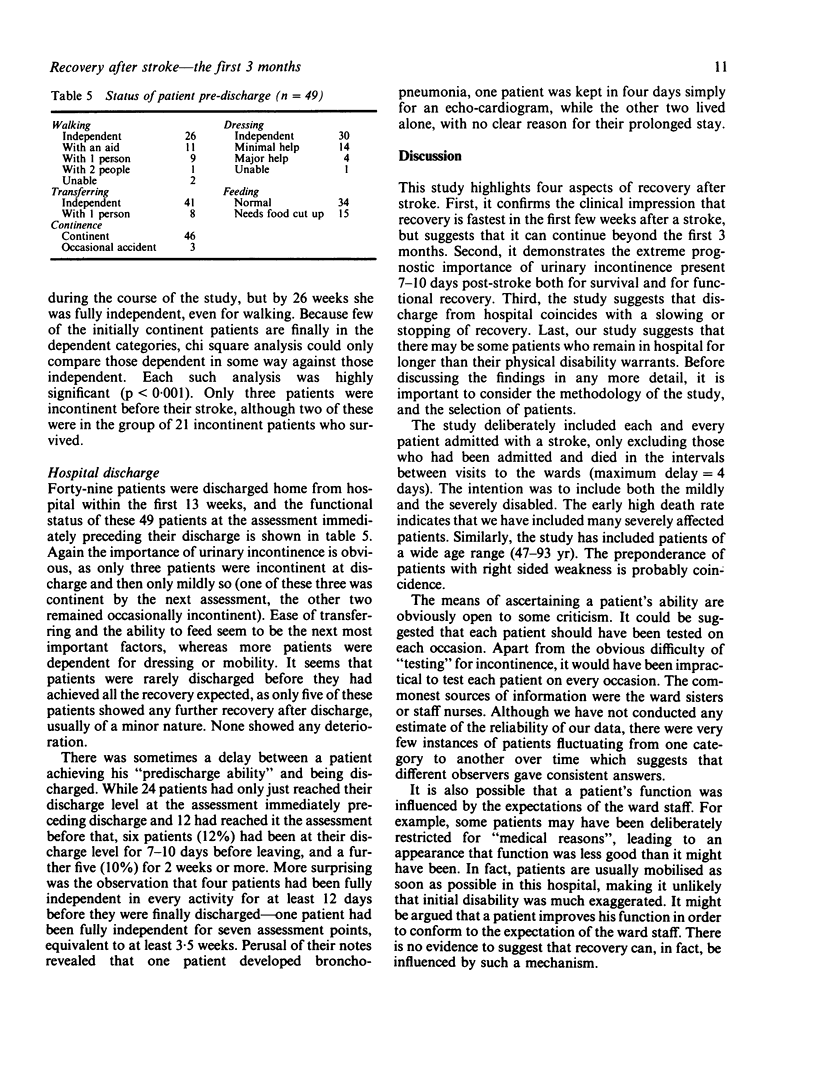
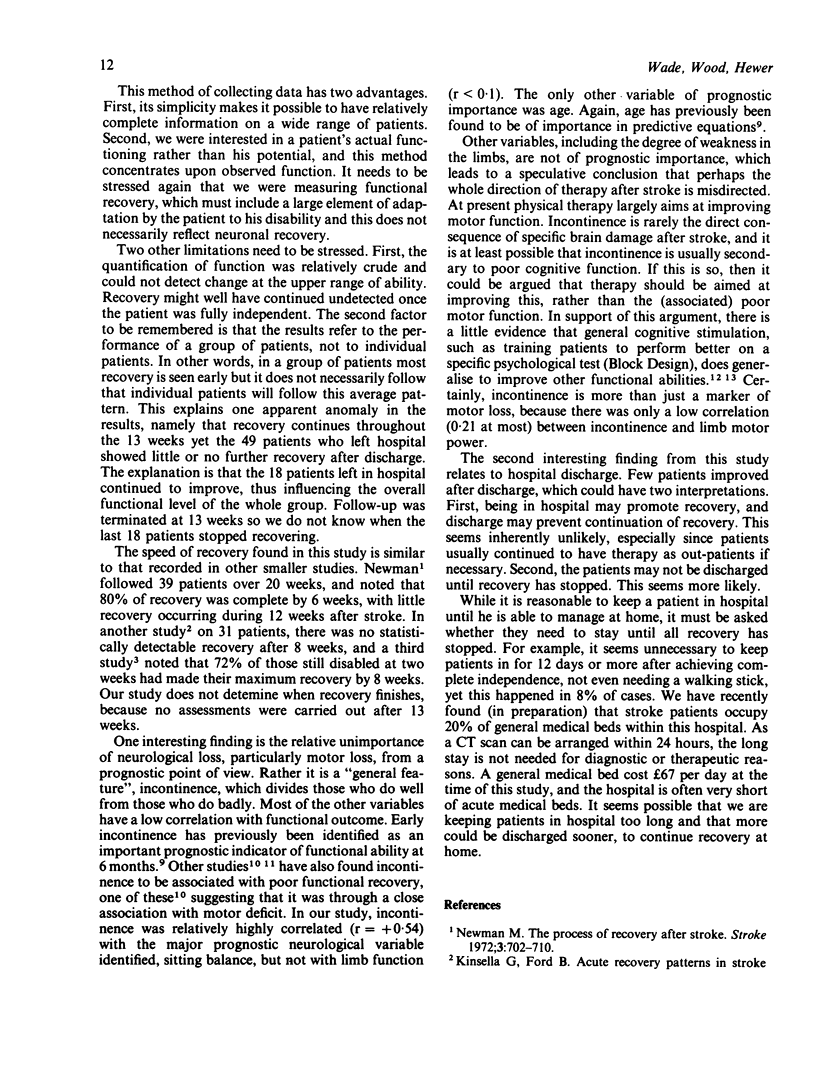
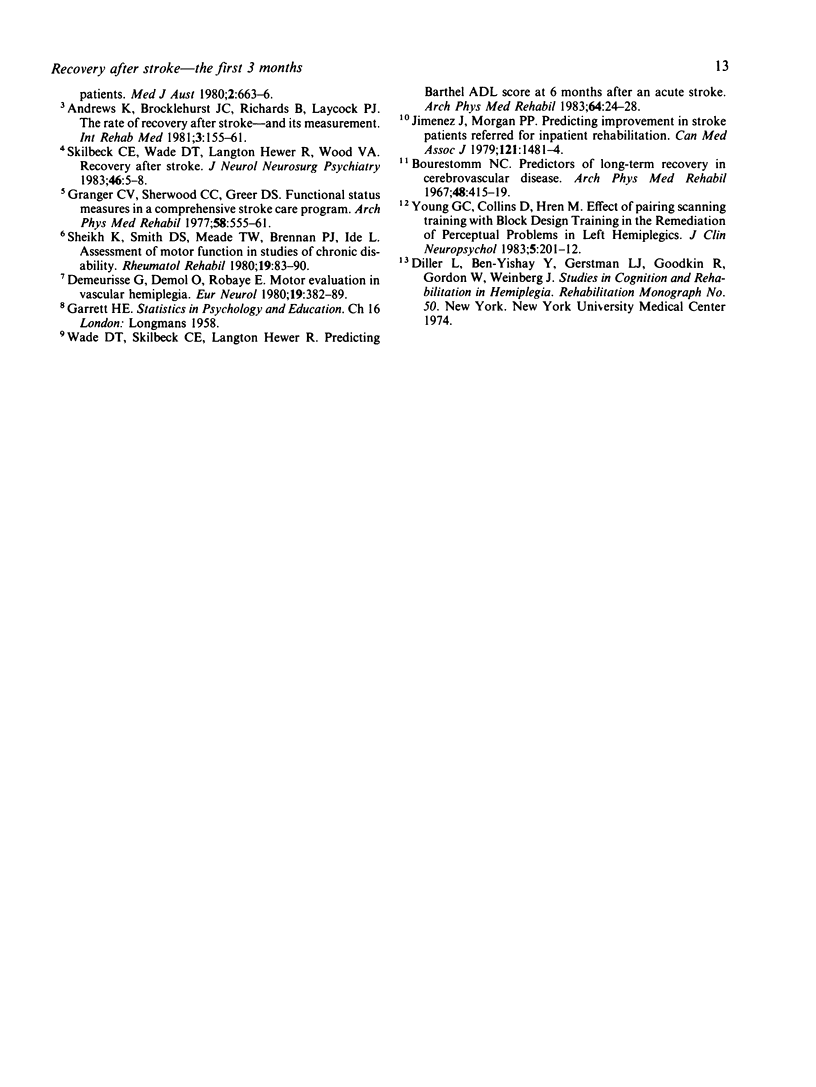
Selected References
These references are in PubMed. This may not be the complete list of references from this article.
- Andrews K., Brocklehurst J. C., Richards B., Laycock P. J. The rate of recovery from stroke - and its measurement. Int Rehabil Med. 1981;3(3):155–161. doi: 10.3109/03790798109166795. [DOI] [PubMed] [Google Scholar]
- Demeurisse G., Demol O., Robaye E. Motor evaluation in vascular hemiplegia. Eur Neurol. 1980;19(6):382–389. doi: 10.1159/000115178. [DOI] [PubMed] [Google Scholar]
- Granger C. V., Sherwood C. C., Greer D. S. Functional status measures in a comprehensive stroke care program. Arch Phys Med Rehabil. 1977 Dec;58(12):555–561. [PubMed] [Google Scholar]
- Jimenez J., Morgan P. P. Predicting improvement in stroke patients referred for inpatient rehabilitation. Can Med Assoc J. 1979 Dec 8;121(11):1481–1484. [PMC free article] [PubMed] [Google Scholar]
- Kinsella G., Ford B. Acute recovery from patterns in stroke patients: neuropsychological factors. Med J Aust. 1980 Dec 13;2(12):663–666. [PubMed] [Google Scholar]
- Newman M. The process of recovery after hemiplegia. Stroke. 1972 Nov-Dec;3(6):702–710. doi: 10.1161/01.str.3.6.702. [DOI] [PubMed] [Google Scholar]
- Sheikh K., Smith D. S., Meade T. W., Brennan P. J., Ide L. Assessment of motor function in studies of chronic disability. Rheumatol Rehabil. 1980 May;19(2):83–90. doi: 10.1093/rheumatology/19.2.83. [DOI] [PubMed] [Google Scholar]
- Skilbeck C. E., Wade D. T., Hewer R. L., Wood V. A. Recovery after stroke. J Neurol Neurosurg Psychiatry. 1983 Jan;46(1):5–8. doi: 10.1136/jnnp.46.1.5. [DOI] [PMC free article] [PubMed] [Google Scholar]
- Wade D. T., Skilbeck C. E., Hewer R. L. Predicting Barthel ADL score at 6 months after an acute stroke. Arch Phys Med Rehabil. 1983 Jan;64(1):24–28. [PubMed] [Google Scholar]
- Young G. C., Collins D., Hren M. Effect of pairing scanning training with block design training in the remediation of perceptual problems in left hemiplegics. J Clin Neuropsychol. 1983 Sep;5(3):201–212. doi: 10.1080/01688638308401169. [DOI] [PubMed] [Google Scholar]


